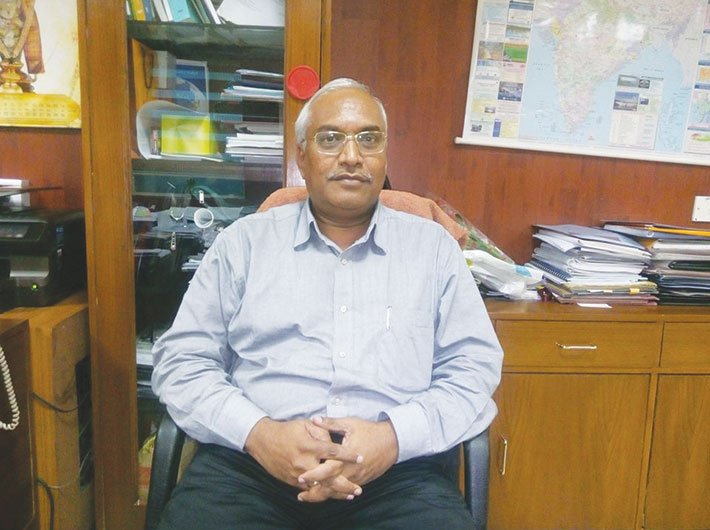IMD chief KJ Ramesh on how well- or ill-prepared the country is to deal with the change in climate
Climate change is for real. And the recent Kerala floods and the deepening farm crisis make this a dreadful phenomenon for India. IMD chief KJ Ramesh talks about how well- or ill-prepared the country is to deal with the change in climate.
From cyclones to unexpected snowfall, 2018 witnessed some severe weather events.
Climate change is here. The extreme weather event which we are facing is the result of climate change. The earth is getting warmer and as the temperature increases the water holding capacity of the air increases, which also means that atmosphere can hold more moisture than ever. And more moisture in the atmosphere ultimately leads to changes in rainfall patterns – the intense burst and downpour are turning into a regular event. Climate change is leading to an increase in the frequency and intensity of extreme weather events, and this is happening across the globe. The geographical and demographic variation of India makes it vulnerable to climate change. Snowfall in the lower Himalayan region – Kufri and Mussoorie – in the second week of December, Kerala rains, deadly heat wave in Andhra Pradesh and Telangana, and the recent Pethai cyclone, the seventh cyclone formed in the Indian Ocean region, which accounts total fifteen storms this year on an average of six cyclones, are a few examples.
Extreme weather is the new normal. Further, there is no frequency of such an event or time. Earlier we used to have twenty-five-year weather cycle or fifty-year cycle to compare extreme events which is no more applicable. The intensity of the same nature can occur without any more massive frequency.
In such a scenario, the responsibility of IMD increases…
Our warning system can detect every extreme event. But one needs to understand that unlike past extreme events, now every episode will not have the period of five or six days before occurring because it’s not a natural event. We need to build efficiently and reach out fast among the community. At present, we are dependent on local news channels and radio.
Can IMD predict the extreme weather of the Himalayan region?
In case of cyclones, India has overcome lead time-related response for safety. The distance from the northernmost point of Indonesia, Banda Aceh, to India’s southernmost point, Indira point, is just 40 kilometres and the travelling time of the wave is thirty minutes. It takes five minutes for us to receive the signal, five minutes to get the access to the details and disseminate the information from the Hyderabad headquarters to the local authority. We have only fifteen minutes to spread the message among public and send people from the seashore to a safer location, and we do it.
IMD can predict snowfall events twenty-four hours in advance, but the minute details can be shared only four hours before its occurrence. IMD is working on building the micro-level climate management community response system in case of more massive rainfall/snowfall in the Himalayan region, where we can help farmers and other stakeholders to minimise the loss of life and economy.
Moreover, one needs to understand that IMD alone cannot work in the hilly terrain, other factors like geological, remote sensing, information about slopes, and local impact play an essential role in deciding the outcome of the rain of that particular area. In the mountainous region, we need robust hydrological response of extreme rain event.
For the past three years, the hilly states have been waiting for the installation of a Doppler weather radar, but nothing has been done?
We have already ordered 10 Doppler weather radars for the hilly region – four at Jammu and Kashmir and three each in Himachal Pradesh and Uttarakhand. The first phase of installation will be completed around April near Kailash Mansarovar. However, the location has yet not been finalised by the government. The second phase will cover Uttarakhand at Joshimath, which will include significant pilgrim destinations like Badrinath, Kedarnath and Gangotri. The other two will be at Pithoragarh and Musoorie. In Himachal, detectors will be installed at Kufri in Shimla district, Dalhousie in Chamba district and Kullu.
A Doppler weather radar covers 250-300 kilometres, and once installed in the area our prediction can narrow down to the radius of one kilometre.
Many scientists have predicted that 2019 will face the elongated effect of El Niño Southern Oscillation phenomenon, which means that the year will be hotter for India.
Even if it is true, the maximum temperature will increase by 0.5 degree celsius. IMD has a heat wave action plan and with the help of the state government we have taken enough steps to reduce the morbidity due to heat wave across India. In 2015, 2,422 people had died. In 2018 it’s hardly 40.
How has the IMD’s forecasting model been changing in the last 10 years?
IMD works on two levels, first on the forecasting policy model and the second on upgrading its infrastructure. In the last four years, the union government has spent Rs 450 crore to buy supercomputers. These supercomputers will help in migrating to cloud computing, big data analysis and web-GIS based support system tools by 2020. We are also building a mobile-based application and by the end of 2019 it will be launched for the public. In November, Rs 1,475 crore were approved by the cabinet to upgrade weather-based technology.
With the change in the weather, many factors are integrated for prediction – be it the local or external factor. We’re continuously revising our forecast models to integrate more parameters that affect extreme weather events. Along with weather, climate and water, we’re incorporating the air quality to predict the visibility or fog. The pollutant trap in the air decides the visibility factor, which was not a factor 10 years back. Similarly, we are using an ocean-atmosphere coupled framework, which includes ocean surface warming for forecasting cyclones and other ocean events.
deexa@governancenow.com
(The interview appears in January 15, 2019 edition)

